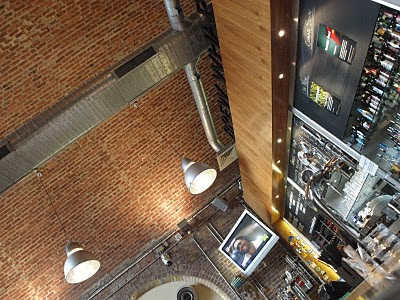 Some time ago I posed the question about what I should call my new brewery. As it happens we've been unable to find a brand name that I like better than Hardknott. Couple that with the fact that this name is already recognised it would seem that it will continue to be the name we will use.
Some time ago I posed the question about what I should call my new brewery. As it happens we've been unable to find a brand name that I like better than Hardknott. Couple that with the fact that this name is already recognised it would seem that it will continue to be the name we will use.Despite this we recognise the need for brand identity that will engage the drinker. As we intend to explore both the local cask market and the wider specialist bottled market the image we produce should be sympathetic to this broad audience. We are working with people to achieve some imagery that will hopefully manage to do this.
Dredgy has a post about bottle labels. I suspect I will go back to the comments on this post several times as we progress down the road of brand design. What I find interesting more than anything is that there is always some disagreement about what constitutes good or bad design. There is a wide range of branding from the ultra-traditional right through to the edgy in-your-face style of the more progressive people. All gain both praise and criticism from various quarters.
This puts me into a bit of a problem, and one that I believe stifles many small breweries. The problem is one of putting the brand image into the hands of somebody else who might not really understand the image that is being portrayed. How much to insist that a designer, who in turn assures that he knows what he is doing, should jolly well listen to what you are trying to tell him you want.
This does result in too many breweries designing their own pump clips, with various degrees of success. The worst designs make their way onto Pump Clip Parade, where Jeff Pickthall makes a concerted effort to shame offenders into reconsidering their style. Having said that, when the beer sells perfectly well without professional input into the process then there can often be a demand to consider more stainless steel by way of investment rather then being concerned about generating a market that can't be supplied anyway.
We have grasped the nettle and have engaged a small studio to come up with some imagery that will eventually translate into a logo, bottle labels and pump clips. The first iteration was promising and the following conversations encouraging. Let's hope that the second iteration, due to me early in the week, will fire up my imagination; after-all, my first new beer is in the fermenter as we speak and it'll need a new pump clip ready for it's launch at some new outlets.
Despite my continuing concern about the ability of global resources to match our desire for a growing economy; for my modest brewery to be viable I do need to generate new markets so that I can make a little bit more money to enable me to buy some more stainless steel. So far, things are more-or-less going to plan.




